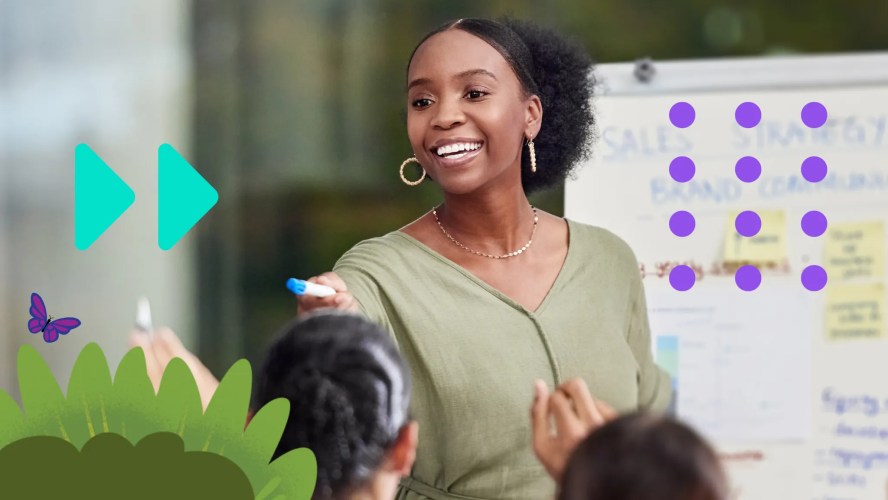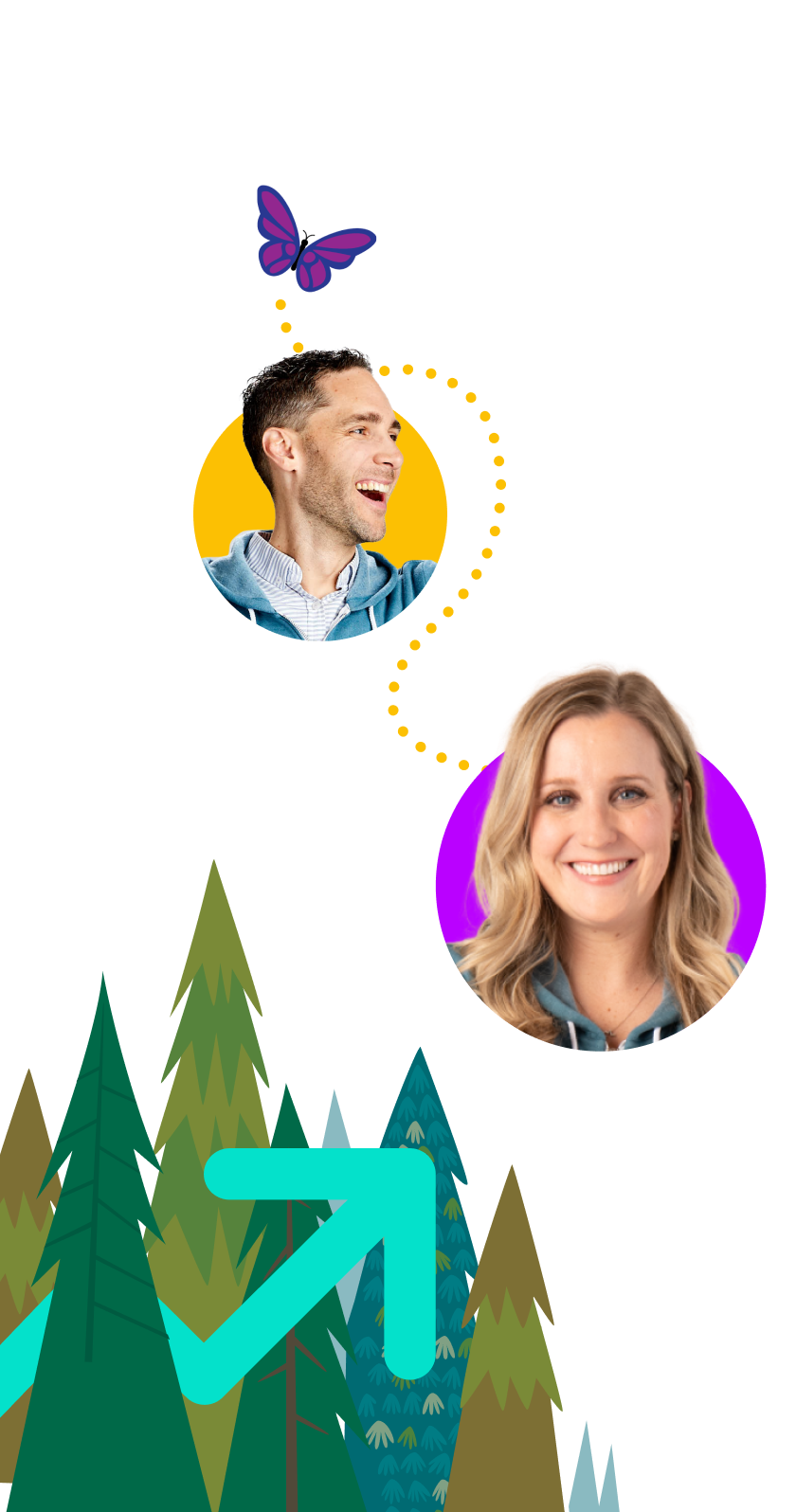How to Create Sales Presentations That Close Deals, According to an Expert



Don't leave success to chance. Learn how to wow your prospects with a personalized sales presentation.
Is there anything worse than sitting through a long, forgettable sales presentation?
Here are a couple of truths to sit with. One: Attention spans are shorter than ever. Two: Time is a precious resource. The time you spend interfacing with clients and prospects, especially during important moments like presentations, is crucial.
Sales presentations give you a chance to address your prospect’s needs in a way that shows you care. Poorly prepared presentations can push prospects away, so it’s crucial to use that time wisely. This guide will cover the ins and outs of creating and delivering impactful sales presentations so you can get one step closer to closing.
What you’ll learn:
- What is a sales presentation?
- 6 tips for making a great sales presentation
- How to structure your sales presentation
- Tips for engaging your audience
- Leveraging visuals and storytelling in sales presentations
- Common mistakes to avoid in sales presentations
Drive pipe faster with a single source of truth
Discover how Sales Cloud uses data and AI to help you manage your pipeline, build relationships, and close deals fast.



What is a sales presentation?
A sales presentation is a meeting where sales teams speak to prospective clients using curated content to present an overall view of a product or service. It’s aimed at showcasing how that product can meet a prospect’s needs. It can also serve as an opportunity to upsell or cross-sell.
Sales presentations differ from sales pitches, which are usually shorter and focus on a specific aspect of your prospect’s needs. They’re typically given by sales reps, sales managers, account executives, or solutions consultants during the middle and later stages of the sales cycle after a lead has been qualified.
The best presentations are well-researched and conversational, supplemented with helpful material like a slide deck or handouts to showcase the product, benefits, and social proof. The structure, format, and timing of a sales presentation may differ, but there are guidelines you can use to ensure maximum impact.
6 tips for making a great sales presentation
A great sales presentation puts you in a solid position to sign a deal with your prospect. Here are simple things you can do to ensure success:
- Do your homework: Poorly researched presentations are impersonal and boring. Getting to know your audience helps you stand out from the people who rush through as many presentations as possible to fill a sales quota. Resources such as their company website, LinkedIn profiles, industry reports, and media coverage are valuable. Some customer relationship management (CRM) tools use generative AI to help sales teams personalize their content. Hands-on research with time-saving AI can be a winning combination.
- Start with your prospect, not your company: Most people don’t care about your awards or how long you’ve been around. Open with insights about the prospect’s business and their challenges. Talking about the customer from the get-go is a great way to differentiate yourself.
- Benefits over features, always: Most presentations are driven by features. “We have this dashboard and this view and these automations,” they’ll say. But people don’t buy features — they buy benefits. Highlight how your product or service improves their operations, saves money, or increases efficiency. Tie every feature to a clear, relevant benefit. Focus on answering the question that underlies the entire presentation: What’s in it for the prospect?
- Keep it concise: Tailor the presentation to the medium. The 10/20/30 rule popularized by marketing guru Guy Kawasaki holds that 20 minutes of content should be your limit, followed by time for Q&A and a few minutes to schedule a follow-up.
- Handle objections like a conversation: Remember that you’re selling to real people, and it’s normal for them to raise objections. Use this time to ask clarifying questions in an effort to redirect their concerns.
- Pause for impact: Give your audience time to process information. For example, when you discuss the price, stay quiet for a beat. Pauses give you gravitas and allow your prospect more time to think. Don’t panic or try to fill every silence.
How to structure your sales presentation
Set the tone by talking about the prospect from the beginning. Mention their industry, problems, and goals while highlighting the insights you’ve gathered about their business. Doing so gives a framework for where their pain points — and your solution — fit into the overall context of their situation. After you’ve established that, review the agenda of what you’ll cover in the presentation to give it a clear structure and set expectations.
The decks used in sales presentations usually follow a similar template. They may include:
- Introduction: Build rapport and show what you know about the prospect while introducing yourself and setting the stage.
- Problem identification: Highlight the prospect’s key challenges to establish the need for a solution, communicating that you understand their pain points.
- Solution overview: Demonstrate how your product or service provides value in solving their problem.
- Supporting data: Back up your assertions. Research is the key to personalized presentations while social proof and case studies tie the benefits to your features more concretely. Starting with a relevant statistic or a hook is great for engagement.
- Summary: Reinforce the benefits of your solution and your unique value proposition.
- Live demo: If applicable, give the audience a sense of how the product works.
- Q&A: End with a slide that opens the floor for questions, and let the audience voice their concerns.
Tips for engaging your audience
According to the State of Sales Report, 59% of business buyers say salespeople “fail to grasp the unique goals they aim to achieve,” reflecting a frustration that sales reps are not putting in effort to actually understand their prospects. Surprising news, since 86% of buyers state they’re more likely to buy when vendors understand their objectives.
Developing your presentation skills takes practice. Public speaking might be daunting, but it gets easier with time. The internet is full of resources to help people develop their presentation skills, and there are communities for sales professionals to come together to practice and get feedback.
A set of tips for giving presentations published by the Harvard Business Review suggests engaging with your audience physically, mentally, and linguistically to battle their tendency to zone out. Physically, you’ll want to incorporate moments of movement — clicking, hand-raising, or reacting. Mentally, ignite their curiosity. Linguistically, use intentional, inclusive, and inviting language, by addressing your audience directly or relating your presentation to shared, common experiences.
Additionally, many sales professionals find that providing refreshments is a helpful way to connect with their audience — and who doesn’t love coffee?
Next steps after a presentation
To reinforce all you emphasized in your sales presentation, follow-up is critical. It keeps the momentum going and maintains engagement while your prospects make decisions. Here’s how to make sure you stay on their radar.
- Send a thank-you email: Get in touch right away, within the first 24 hours. Summarize key points from the presentation, and highlight how your solution meets their needs.
- Schedule a follow-up meeting: Don’t wait for them to make the next move. Planning to meet as soon as possible keeps you top of mind. Use this time to answer any additional questions they might have and discuss the next steps.
- Share valuable content: Personalization will help you stand out. Providing valuable content, like case studies or industry insights, keeps them engaged while they consider your proposal.
Remember: Persistence is key.
Leveraging visuals and storytelling in sales presentations
It’s a good practice to supplement your presentation with handouts to highlight key points and give the audience something to take back with them.
If your presentation is virtual, make full use of screen-sharing and interactive content as well as live chat tools to keep your audience engaged. If it’s in person, where conversations flow more naturally, make good use of that advantage. Reading body language and seeing people’s reactions lets you adapt your talking points on the fly.
Whether your presentation is in-person or virtual, actively listening to your audience is non-negotiable. I suggest including one key question at the end for maximum impact. That question is: “Is there anything I’ve missed?”
Capping your presentation with this question opens the door for a real discussion. You might learn a thing or two about your prospect that you didn’t expect.
Join the Salesblazer movement
We’re building the largest and most successful community of sales professionals, so you can learn, connect, and grow.

Common mistakes to avoid in sales presentations
There are simple ways to avoid a poor sales presentation, including:
- Rushing through presentations: Moving through the material too quickly is overwhelming and inhibits the audience from absorbing the main ideas. Instead, slow down, emphasize key points, and pause to ensure the audience understands before moving on.
- Lack of personalization: A generic presentation that closely follows a template won’t resonate with your prospect’s specific needs or challenges. Instead, customize the presentation by using real-life examples, stories, and case studies that directly relate to the prospect’s business.
- Forgetting to follow-up: Not planning the next steps leaves the conversation without direction, risking a loss of momentum. Instead, end your presentation on a high note with a clear plan for the next steps. Schedule a follow-up meeting, and send them engaging, personalized content. It keeps you top of mind while they consider your competitors.
- One-sided presentations: Your presentation is about your customer, not your product. Presentations should be more like a dialogue than a broadcast. Customize your presentation for your audience and keep the emphasis on them.
- Not allowing prospects to ask questions: Ignoring or rushing through Q&A prevents the prospect from addressing concerns, which prevents both parties from addressing them. Break often to invite questions and encourage an open dialogue, allowing time to address any of your prospect’s concerns.
Put your best foot forward
Giving a sales presentation is a great opportunity to showcase your product while demonstrating that you have a deep understanding of your prospect’s needs. Just remember:
- Great sales presentations are personalized and conversational.
- Benefits will always resonate more than a list of features.
- Pausing to let your audience ask questions helps build trust and deepen engagement.
- Setting time to follow up helps you stay relevant while moving through the process to a decision.
There’s no single way to ensure a sales presentation will bring you to your desired outcome, but these learnings can sharpen your presentation skills and help you make a better impression. And better impressions can mean more closed deals.
Want to take the #1 CRM for a test drive?
Go on our Guided Tour to see how Sales Cloud boosts productivity at every stage of the sales cycle.




























